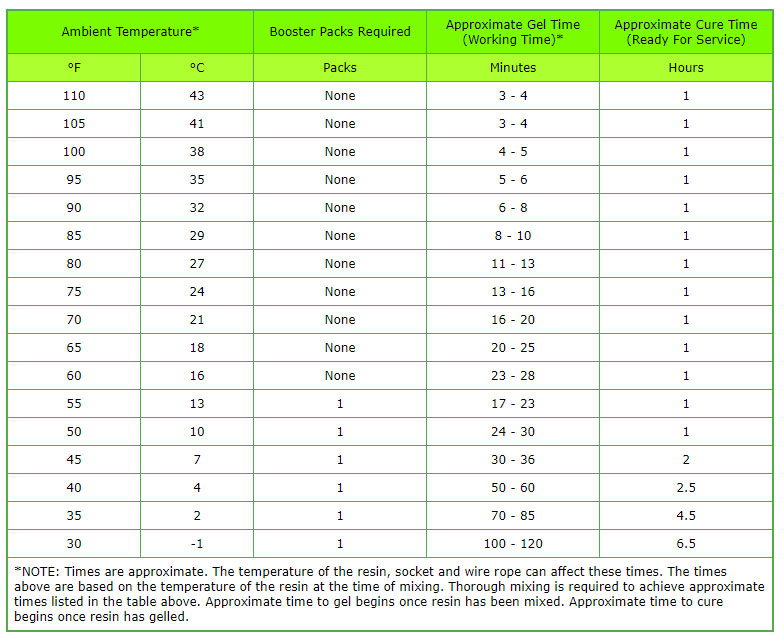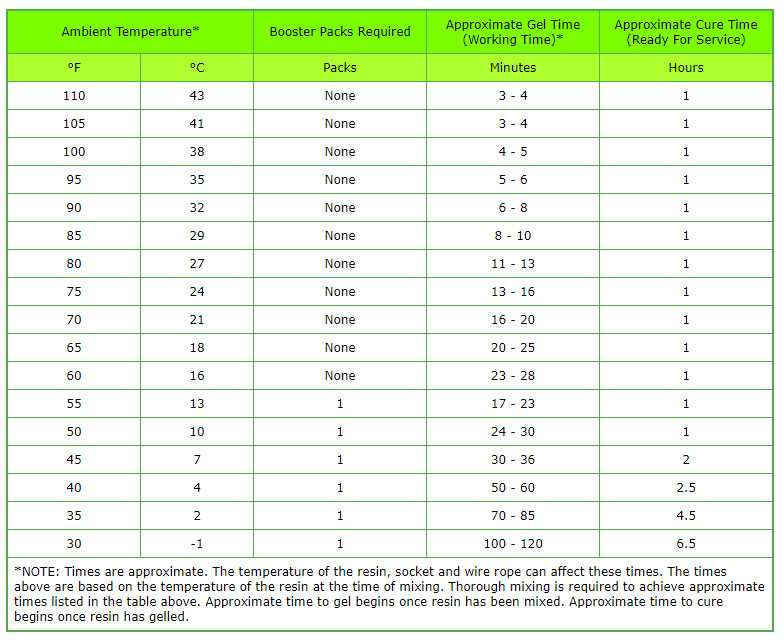
How Socket Lock Works
As the resin hardens and cures, shrinkage occurs that creates a frictional bond to the wires. Silica is blended into the resin mixture to add frictional grip properties. The silica also serves to absorb heat caused by the chemical reaction that results when hardening agent is added to the resin.
As load is applied to the rope, the resin cone is pulled downward in the bowl of the socket. As this is happening, the cone shape forces compression of the hardened resin cone against the individual wires and the socket walls. This compression then generates a tremendous frictional grip between the wires and resin resulting in a strength that exceeds the breaking strength of the rope.
Note: Some sockets have grooves that may prevent the cured resin cone from seating properly as loading occurs. Filling the grooves with putty is an acceptable method to correct this situation. Seating of the cone is necessary to generate compression and frictional forces required to achieve 100% termination efficiency of the assembly.

Recommended Tools

Warnings
 Determine if socket has grooves. Inspect inside of socket bowl to determine if socket has grooves. If grooves are present, fill grooves with socketing putty.
Determine if socket has grooves. Inspect inside of socket bowl to determine if socket has grooves. If grooves are present, fill grooves with socketing putty.
Only use soft annealed iron wire for seizing wire.
Socket Lock resin must be gelled and cured before assembly can be used.
Socket Lock is not to be used with stainless steel rope in a salt water environment.
Never use oversized sockets for wire rope.
Never use Socket Lock beyond the expiration date.
Never heat socket prior to pouring resin in an effort to accelerate the curing of the resin as it may cause the resin to prematurely gel prior to reaching the bottom of the socket bowl. Doing this could cause the assembly to fail.
Caution: Exposure to some strong chemicals may affect the cured polymer (hardened resin mixture) in a way that could weaken the assembly. Please contact Sea Fit, an authorized distributor or the manufacturer if this has occurred.
Safety Information
 When handling the resin or hardener, goggles and protective clothing are recommended. Impervious gloves are recommended.
When handling the resin or hardener, goggles and protective clothing are recommended. Impervious gloves are recommended.
Always work in a ventilated area.
Avoid skin or eye contact. Wash skin with soap and water and remove contaminated clothing. If contact with eyes, flush with clean water for at least 15 minutes. If irritation persists, seek medical attention.
Never exceed the working load limit of the assemblyAvoid ingestion. If ingestion occurs, DO NOT induce vomiting. Drink milk or water to dilute and call for medical attention.
Avoid inhaling vapors. If excessive vapors are inhaled, move to a fresh air area. If breathing has stopped or is labored seek medical attention.
Never aim an open flame at Socket Lock. Keep away from heat. Resin is a flammable liquid.
Whenever using chemicals, always reference the MSDS sheet for safety and handling guidelines.
Temperature and Times
 Cold Temperature Issues
Cold Temperature Issues
In cold temperatures, ideally, the rope, socket and resin would be stored indoors to maintain the components of the assembly at a warmer temperature. It is best if all three components are the same temperature. Please note that if these three components are stored at room temperature, booster packs should not be used at even the coldest temperatures.
It is not recommended to aggressively apply heat (as with a flame) to the socket prior to pouring since the heat may cause the resin to gel prematurely and prevent the resin from reaching the bottom of the socket cone. Wrapping the socket in a heat blanket to facilitate controlled and uniform heating is a safe and effective method of accelerating the cure process.
NOTE: Thorough mixing is required to achieve approximate times listed in the table to the right.
Approximate time to gel begins once resin has been mixed.
Approximate time to cure begins once resin has gelled.

